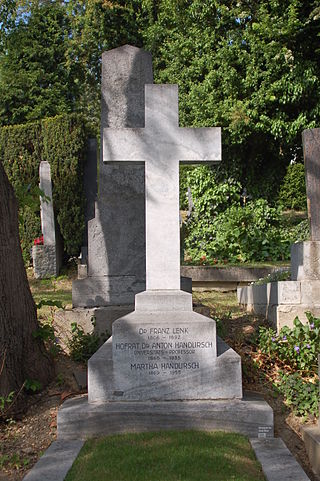Related Research Articles

The Royal Irish Academy, based in Dublin, is an academic body that promotes study in the sciences, humanities and social sciences. It is Ireland's premier learned society and one its leading cultural institutions. The Academy was established in 1785 and granted a royal charter in 1786. As of 2019 the RIA has around 600 members, regular members being Irish residents elected in recognition of their academic achievements, and Honorary Members similarly qualified but based abroad; a small number of members are elected in recognition of non-academic contributions to society.

Alexander Henry Haliday was an Irish entomologist. He is primarily known for his work on Hymenoptera, Diptera, and Thysanoptera, but worked on all insect orders and on many aspects of entomology.
William Frederick Johnson (1852–1934) was an Irish naturalist primarily interested in Entomology.

Robert Lloyd Praeger was an Irish naturalist, writer and librarian.

Eugene O'Mahony was an Irish museum curator and entomologist who worked on Coleoptera, Mallophaga and Siphonaptera.

Nathan Banks was an American entomologist noted for his work on Neuroptera, Megaloptera, Hymenoptera, and Acarina (mites). He started work on mites in 1880 with the USDA. In 1909 he reported many Costa Rican species with several new species saying "During the past few years the writer has received large series of spiders and daddy-longlegs from Costa Rica for identification". In 1915 he authored the first comprehensive English handbook on mites: A Treatise on the Acarina, Or Mites.

Philip Reese Uhler was an American librarian and entomologist who specialized in Hemiptera, an insect order commonly known as true bugs. He was considered America's foremost expert on this group and was widely sought out for identification of species in this order.

The fauna of Ireland comprises all the animal species inhabiting the island of Ireland and its surrounding waters.
Arthur Wilson Stelfox was an Irish naturalist and architect. Stelfox was a recognised authority on Hymenoptera and on non-marine Mollusca especially the genus Pisidium. He also made important contributions to scientific knowledge concerning Irish botany and on identifying and describing remains from prehistoric sites in Ireland.

Anton Handlirsch or Anton Peter Josef Handlirsch was an Austrian entomologist. He worked on many groups including Hemiptera, Hymenoptera and Neuroptera. His most significant work was in the study of fossil insects.

Robert Ball was an Irish naturalist. He served as the Director of the Dublin University Museum, and developed a method of dredging known as "Ball's dredge." He served as a secretary to the Royal Zoological Society of Ireland for two decades and was responsible for popularizing natural history through public educational outreach.

Edward Percival (Perceval) Wright FRGSI was an Irish ophthalmic surgeon, botanist and zoologist.
The Clare island Survey was a multidisciplinary survey of Clare Island an island off the West coast of Ireland.

Nathaniel Colgan was a self-taught Irish naturalist primarily known for his botanical work.
George Herbert Carpenter (1865–1939) was a British naturalist and entomologist, born in the Peckham district of southeast London in 1865, and died in Belfast on 22 January 1939. His main interests were in the study of insects and arachnids, zoogeography, and economic zoology. In addition to numerous contributions to scientific journals and Encyclopædia Britannica, he authored five books.

Jane Stephens was an Irish zoologist who was considered a leading authority on sponges in Ireland with specialised knowledge in other marine life who identified and named over 40 sponges new to science. From 1905 to 1920 she was employed in the Natural History Division of the National Museum of Ireland working primarily on the collections of marine invertebrates, including taking part in the Clare Island Survey. Robert Lloyd Praeger testified to her knowledge of and work with Irish sponges stating that "Most of what we know of this group, whether marine or fresh-water, in Ireland, or off the Irish coasts, is due to her work."
Veronica Conroy Burns was an Irish museum curator, best known as an expert on graptolites.
Dr Andrew Rodger Waterston OBE FRSE FRES was a Scottish zoologist, specialising in malacology and entomology. He was interested in the insect fauna of the Middle East and in the fauna of the Outer Hebrides. He was generally known as Rodger Waterston.
Edward Bertram Pinniger FRES was a British recording engineer and amateur entomologist. In 1946, he and Cynthia Longfield of the Natural History Museum were the first to identify Coenagrion scitulum in Britain.
George Herbert Pethybridge was a British mycologist and phytopathologist, who gained an international reputation for his research on diseases of the potato species Solanum tuberosum. He is noteworthy for his 1913 discovery of the water mold species Phytophthora erythroseptica.
References
- Beirne, in Irish Naturalists Journal, 9, 1948, pp. 168–171.